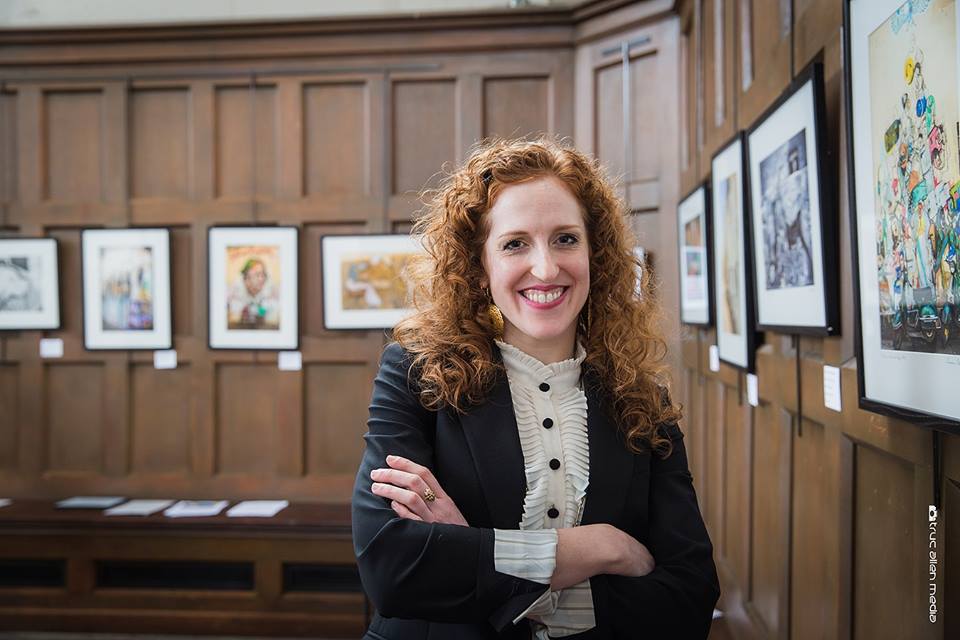I’m excited to announce that my exhibit War on Walls: Egypt’s Arab Spring Street Art is now open to the public! On Sunday we held the opening reception for the exhibit and it was a smashing success with a huge guest attendance!
Details on Exhibit:
St. Mark’s Cathedral Nave
Capitol Hill, Seattle
January 11 – February 15, 2015
Daily 7am-7pm; free to public
To purchase one of the limited edition fine art prints from the exhibit contact genevieve@geneveivehathaway.coom (note they are going fast so purchase yours before they are sold out).

My exhibit War on Walls is now open to the public. Stop by St. Mark’s Cathedral to look at this groundbreaking photography project. Photo courtesy of Truc Allen Media.
War on Walls has been a 3 year long journey to photograph the Arab Spring street art, publish the project as a book and now hold it as an exhibit. During that time, I also had a number of public speaking engagements on the topic at conferences and universities. From Cairo, to Melbourne, to Seattle, to Brown University to Oregon State University, this project spanned three continents, three countries, and two hemispheres. (Who knows what’s next, maybe a traveling exhibit??? And exhibit in Europe. If you have connections or ideas drop me an email, I’d love to hear from you!)
For me this journey began back in 2003 when I was studying Egyptology at the American University in Cairo. At that time, the AUC campus was located on Tahrir Square. I studied Egypt’s most famous pharaohs and ancient piles of rubble on the street where the largest massacres and protests of Egypt’s revolution took place. Though today AUC’s campus is outside of Cairo at the town of Heliopolis, the former AUC campus on Tahrir Square and Mohammed Mahmoud street is still used as admin buildings, bookshops and libraries. Most of the images shown from Egypt’s revolution and these street art images in this exhibit took place in front of the buildingswhere I studied in 2003. Behind the image of Mubarak and Tantawi’s faces merged together, that is where I had a Cultural Geography Class. The image of the two bulls fighting that looks reminiscent of Guernica, behind that wall was the building where I would use the computer lab. (They had a fleet of dot matrix printers, so old I had never seen one but knew the perforated edges that you tear off. ) This personal connection to the streets and buildings where Egypt’s revolution took place made the Arab Spring and this project to photograph its street art even more personal.
Fastforward to 2012. When I began this project in early 2012, I was working in Cairo, living in a hotel room facing onto Tahrir Square. The regime had toppled, former President Hosni Mubarak had been forced to resign a year earlier and presidential elections had been scheduled for June 2012, just a few months away. Tahrir Square teamed with individual protestors, formal political groups and random citizens, giving voice to every type of civil complaint – from politics and police to taxes, utility expenses, and traffic congestion.
Street art was a defining feature of the Egyptian revolution: raising awareness of political and economic issues, pressuring the regime and governing bodies for change, injecting dark humor into turbulent times, and providing a visual memory of important events and individuals.
Living on Tahrir Square, I observed the wall art grow and change to reflect current events and the demands for social, political and economic change. I was inspired by the artists’ dedication to creating these complex, culturally significant expressions of Egypt’s Arab Spring. For me, photography is a powerful tool to change perspectives and share untold stories. In creating these photographs, I intend to show a different side to Egypt’s Arab Spring revolution – the ability of art to change individual’s perspectives and impact larger social movements.
I hope you enjoy the exhibit! Email me at genevieve@genevievehathaway.com with thoughts or questions or post them in the comments.
Thank you to St. Mark’s Visual Arts Ministry, MidEast Ministry and also the Seattle Office of Arts and Culture for their support of this exhibit.